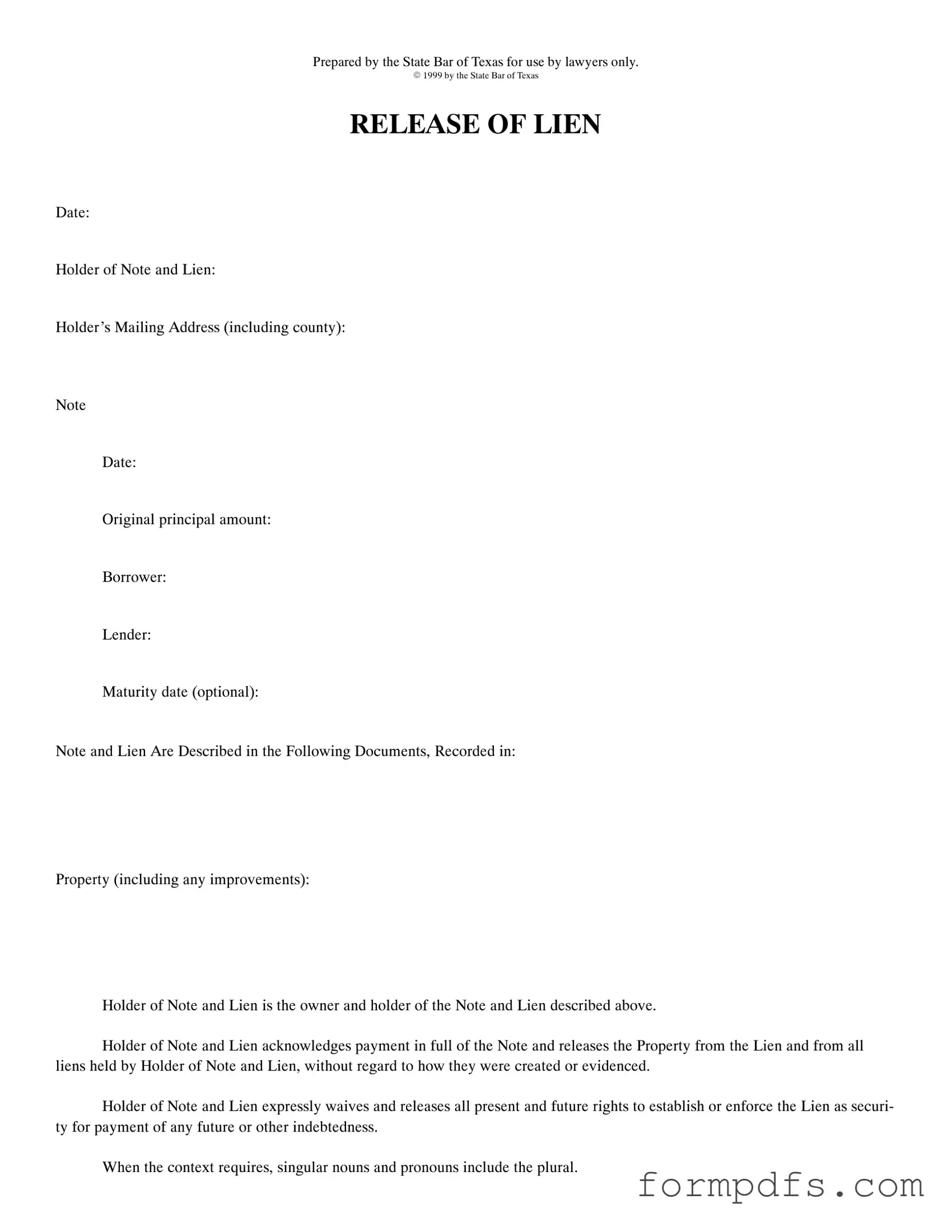What is a Release of Lien Texas form?
The Release of Lien Texas form is a legal document used to formally release a lien on a property. This form is typically prepared by a lawyer and acknowledges that the holder of the lien has received full payment for the debt secured by the lien. Once completed and recorded, it clears the property of the lien, allowing the owner to have clear title.
Who needs to use this form?
This form is primarily used by lenders or lien holders who have received full payment on a loan secured by a lien on real property. Borrowers may also need this form to ensure that their property is free from any claims or encumbrances related to the loan.
What information is required to complete the form?
To complete the Release of Lien form, you will need to provide details such as the date of the release, the name and address of the lien holder, the original principal amount of the loan, the borrower's name, and a description of the property. Additionally, it may include the note date and maturity date.
How does the lien holder acknowledge payment?
The lien holder acknowledges payment by signing the form, indicating that they have received full payment for the note. This acknowledgment is essential for the legal validity of the release and must be notarized to ensure authenticity.
What happens after the form is completed?
Once the Release of Lien form is completed and signed, it must be recorded with the appropriate county office where the property is located. This recording makes the release official and provides public notice that the lien has been removed.
Is notarization required for this form?
Yes, notarization is required for the Release of Lien Texas form. The signatures of the lien holder must be acknowledged by a notary public to ensure that the document is legally binding and valid.
Can this form be used for any type of lien?
This form is specifically designed for the release of liens related to real property loans. It may not be suitable for other types of liens, such as mechanic's liens or tax liens. Always consult with a legal professional to determine the appropriate form for your specific situation.
